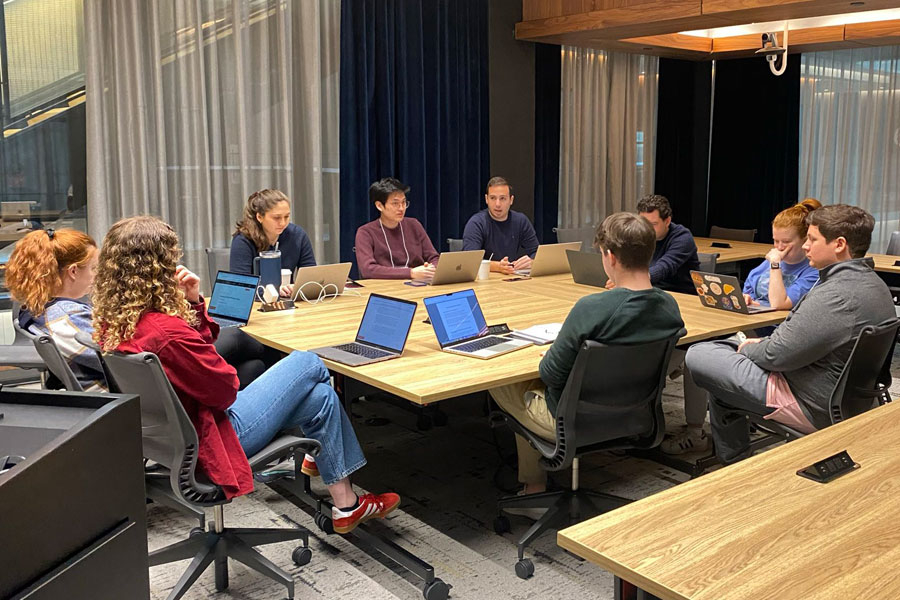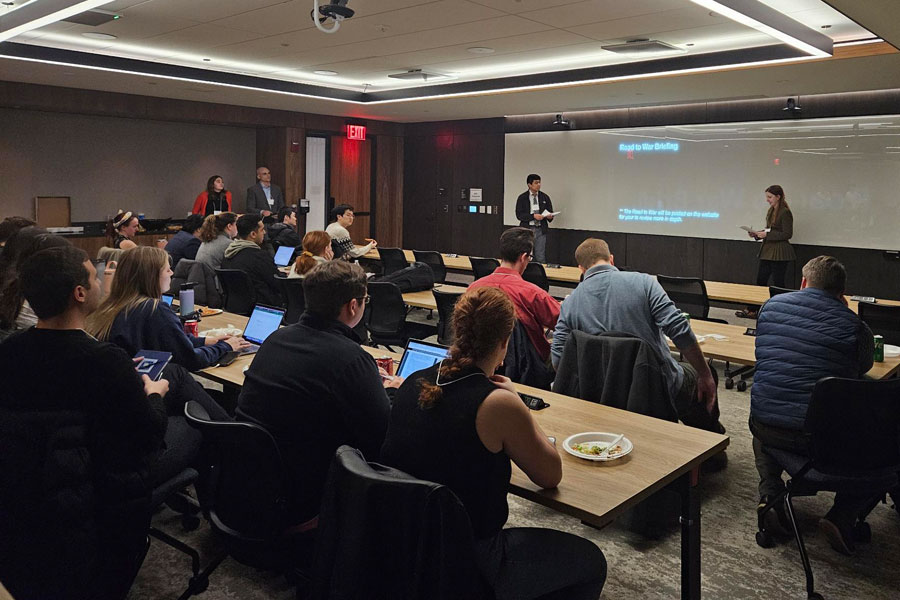Students Hone Problem-Solving Skills in Crisis Simulation Exercise

Over the weekend of February 23-25, 2024, Johns Hopkins SAIS held its annual school-wide Crisis Simulation exercise, bringing together more than 70 students in an experiential learning activity to test their critical thinking and problem-solving skills as they tried to resolve a theoretical global crisis.
The exercise was the culmination of six months of planning by nine students in the Seminar in Crisis Simulation, a course co-taught by Stacie Pettyjohn and SAIS alum Jacob Cohn. This hands-on course focuses on developing detailed crisis scenarios and decision-making frameworks, then applying them to complex policy questions involving various national and international actors.
Cohn noted that the Crisis Simulation exercise, designed and executed by students, is a SAIS tradition dating back to at least the 1980s and is often one of the formative memories from students' experiences. “Games and crisis simulations cannot predict the future, but they broaden participants' imagination and improve their understanding of complex problems,” he said. “Not only do games help participants grapple with challenging problems, they can also be instructive in terms of how each participant handles time pressure, stressful situations, and the need to make decisions with incomplete information—all useful skills in students' future endeavors.”
This year’s Crisis Simulation imagined a world in which the United States no longer plays a prominent role in international diplomacy. Students participating in the simulation faced crises in Europe (a potential conflict between fellow NATO states Greece and Turkey), and Asia (a maritime hostage crisis involving North Korea, Russia, Japan, and South Korea). The students were divided into teams to represent the viewpoints and advance the objectives of the different countries involved.
“The simulation put us in the uncomfortable role of navigating an American withdrawal from global affairs,” said Louis Martin-Vézian, a second-year MAIR student. “It was a sobering picture of a potential future, but it was reassuring to see alliance dynamics adapting and shifting, but not departing significantly from the architecture we are familiar with today.”
Beyond the challenges of the scenario, it was also necessary for participants to coordinate their actions under time pressure and with no clear consensus on the best path forward.
“One of the more difficult parts was coordinating and communicating with allies during an ongoing time-sensitive crisis, as we found ourselves being stuck over differences involving procedures or messages,” said Seokjin Yun, a first-year MAIR student.
Angelora Castellano, another first-year MAIR student who took part in the exercise, liked the opportunity to navigate a situation that was complex with live action information and obstacles. “It expanded my understanding of the capabilities, influences, and impacts that nations have individually and as allies,” Castellano stated. “I was also able to think from the perspective of a country that wasn’t my own and consider situations and relationships that I hadn’t before.”
Like all experiential learning activities at SAIS, the Crisis Simulation exercise enabled students to put into practice the skills and knowledge they are developing in the classroom. Vivian Eng-Bendewald, a graduate of the Hopkins-Nanjing Center and current MAIR student, also pointed out the camaraderie the shared experience builds among participants: “The ability to play out different strategies and communication is an instructive and interesting way to exercise the many aspects of our SAIS education.”
The Seminar in Crisis Simulation will return in Spring 2025.
Enjoyed reading Students Hone Problem-Solving Skills in Crisis Simulation Exercise? Learn more about what Washington DC campus has to offer.
Back to Beyond the Classroom Stories